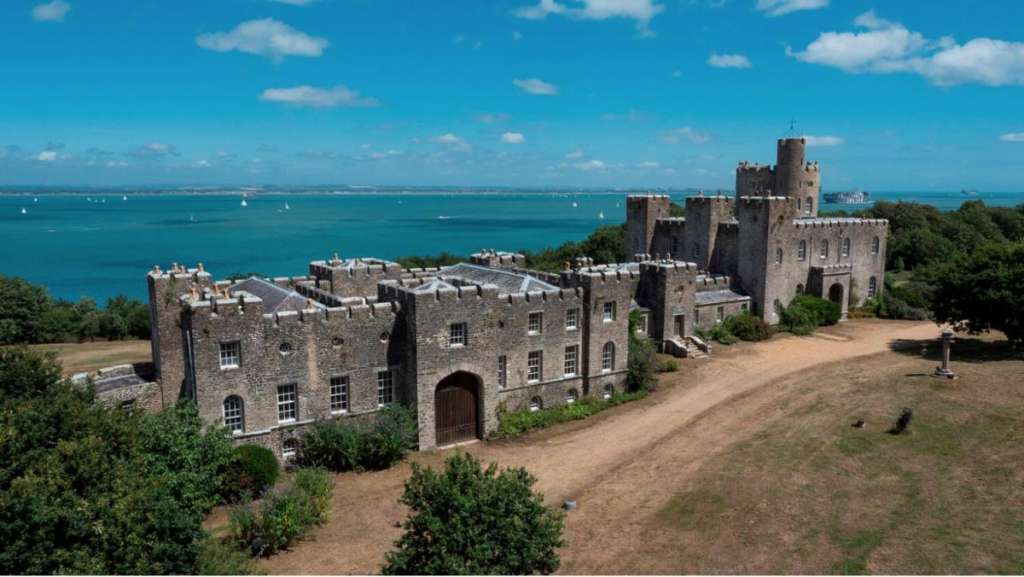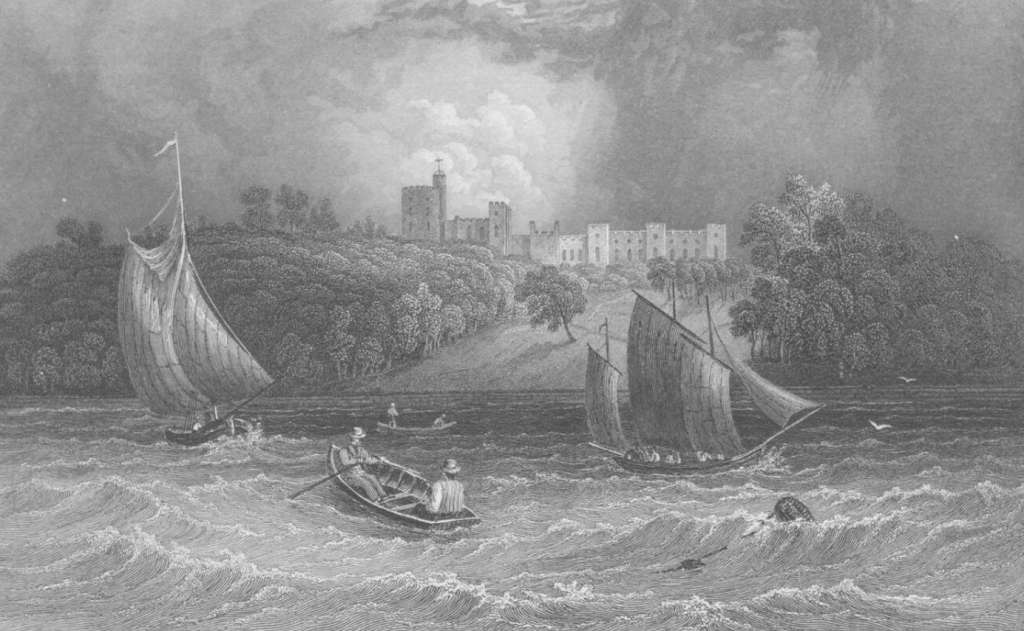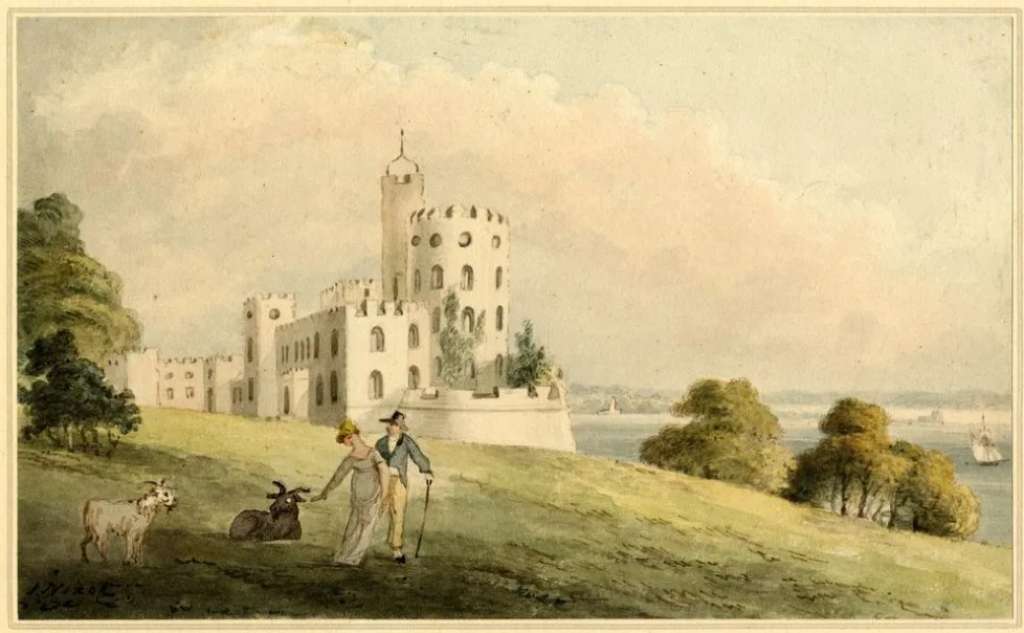PRESS RELEASE: SAVE raises alarm over threat to Norris Castle, masterpiece of the English Picturesque
16th June 2022
SAVE Britain’s Heritage has joined calls to reject plans that would irreparably damage one of Britain’s remarkable ensembles of listed buildings and protected parkland running down to the sea.
One of the sublime masterpieces of the English Picturesque, Norris Castle and its purpose-designed landscape on the Isle of Wight are under threat from inappropriate and overscaled development.
SAVE has written urgently to Isle of Wight Council arguing that the plans should be thrown out on the grounds that the applicant has included insufficient detail so that it would be impossible to determine such a major application.
We are backing similar objections from the Gardens Trust and Historic England, the government’s heritage advisors, pointing out the “alarming” lack of accurate visual representations, CGIs or scale drawings.
Our letter says: “The applications seek permission for substantial new development within one of the nation’s most historically important estates, involving major alterations to the fabric and setting of three grade I-listed heritage assets, all of which are of exceptional individual and collective importance.
"Given that this is a hybrid planning application for major development, it is therefore alarming that the detailed elements of the proposals are not accompanied with commensurately detailed plans and assessment of the existing buildings and landscape, and the substantial alterations proposed for them.”
Norris was the joint creation of the prodigiously talented architect James Wyatt and the equally renowned landscape gardener Humphry Repton – who were close friends and colleagues.
The unblemished Regency ensemble consists of Norris Castle and Norris Model Farm, both designed by Wyatt for Lord Henry Seymour in 1799 in the Gothic Revival style; as well as 225 acres of parkland fronting the Solent. All three are grade I listed, the highest level of protection afforded by Historic England. The landscape is the only one on the Isle of Wight to be grade I listed.
The castle's famous guests include Queen Victoria, whose beloved Osborne House Estate adjoins to the east, the Prince Regent and Kaiser Wilhelm.
The site’s owner, Norris Castle Estate (Group) Ltd, submitted £107m proposals to turn the estate into a 5-star leisure park, with the castle becoming a 74-room hotel and 120 holiday homes. A new terrace would be built in front of the castle with four "sentinel" apartment buildings and a set of new cottages, all of which will be visible from the sea by the hundreds of sailing boats participating in races and regattas in the Solent – for whom Norris Castle is a key landmark. Despite this, no contextual elevation drawings are provided, nor any view analysis showing the cumulative impact of the new development as a whole.
Under the plans several other historic buildings in the landscape would be converted for leisure use, including the model farm and its walled kitchen garden which would become a spa and wellness centre.
SAVE is urging Isle of Wight councillors to reject the planning application on the grounds that it contains insufficient detail for a site of such unparalleled historic significance.
Our letter concludes: “If the council is minded to proceed with determination despite these concerns, SAVE would strongly object to the proposals, which we consider in their current form would cause irreversible and substantial harm to the Norris Estate and its constituent parts, and in clear contradiction to national and local planning policy for the protection of the Isle of Wight’s historic environment.”
Henrietta Billings, director of SAVE Britain’s Heritage, says: “This is one of the nation’s most important ensembles of historic buildings and landscape, reflected in the highest possible listing protection, yet it is hard to see the impact of the proposals with such a startling lack of detail. The council has a duty to throw them out in their current form.”
The architectural historian John Martin Robinson, author of a major study on the Wyatt family of architects, says: “These proposals are outrageous and totally unsuitable for this prize example of the Regency Castle style.”
Marcus Binney, executive president of SAVE Britain’s Heritage, says: “Wyatt’s genius was to link a quite modest house with a kitchen wing, domestic offices and stables all combined into a single spreading composition picturesquely stepping down in response to the contours of the landscape.
“Repton, in one of his famous Red Books, designed an arcadian park of smooth greensward sweeping down to the sea. The result is a breathtaking marriage of architecture and landscape each perfectly scaled to the other.
“Scenically it is the more important as Norris is the neighbour and precursor of one of the marvels of early Victorian England, the Prince Consort’s Osborne House beloved of Queen Victoria.”
Notes to editors:
1. For more information contact Elizabeth Hopkirk: elizabeth.hopkirk@savebritainsheritage.org / 020 7253 3500.
2. SAVE Britain's Heritage is an independent voice in conservation that fights for threatened historic buildings and sustainable reuses. We stand apart from other organisations by bringing together architects, engineers, planners and investors to offer viable alternative proposals. Where necessary, and with expert advice, we take legal action to prevent major and needless losses.





